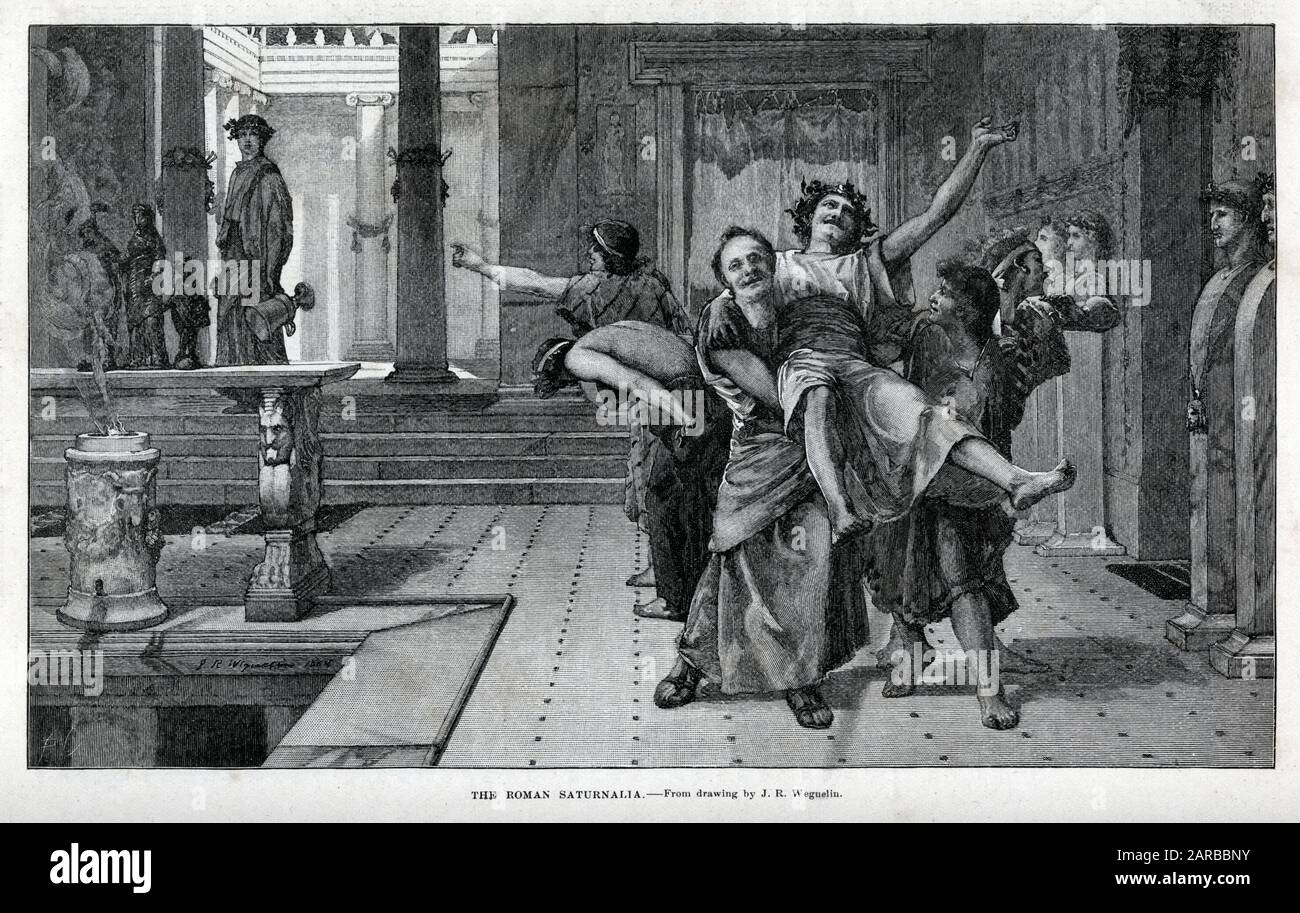
The revelries of Saturnalia were supposed to reflect the conditions of the lost mythical age.

In Roman mythology, Saturn was an agricultural deity who was said to have reigned over the world in the Golden Age, when humans enjoyed the spontaneous bounty of the earth without labour in a state of innocence. The poet Catullus called it “the best of days”. The gifts exchanged were usually gag gifts or small figurines made of wax or pottery known as sigillaria. The Lord of Misrule was generally a peasant or sub-deacon appointed to be in charge of Christmas revelries, which often included drunkenness and wild partying. This custom derived in the Middle Ages into the Lord of Misrule in England– known in Scotland as the Abbot of Unreason and in France as the Prince des Sots – that was an officer appointed by lot during Christmastide to preside over the Feast of Fools. A common custom was the election of a “ King of the Saturnalia“, who would give orders to people and preside over the merrymaking. The holiday was celebrated with a sacrifice at the Temple of Saturn, in the Roman Forum, and a public banquet, followed by private gift-giving, continual partying, and a carnival atmosphere that overturned Roman social norms: gambling was permitted, and masters provided table service for their slaves. If your Christmas is starting to look as dry as that turkey dinner, leave the nativity scene to the kids and breathe some life into a few abandoned winter traditions with a not-so-virgin Mary.Saturnalia was an ancient Roman festival in honour of the god Saturn, held on 17 December of the Julian calendar and later expanded with festivities through to 23 December. Gradually as they converted the Inuit to Christianity, the winter feasts began to look a lot like Christmas, with the wife swapping to go first.

This exchange of women seemed to be a recurring feature of the winter feasts in the North Baffin area, and one that quickly drew the interest, and horror, of Christian missionaries. Now, we can't get too excited here - sexual intercourse is only implied - but it held great significance for the Inuit as it favoured the hunting of game. The couples then returned to the home of the women, where they would remain man and wife for the next day and night. Franz Boas, the father of American anthropology described two huge figures disguised in tattooed seal masks and heavy boots line up men and women and pair them off in a paper from 1888. Showing the bloody harpoon to your community, you could then get ready for some tug-o-war, cross-dressing, feasting and wife-swapping. Luring her up with a magic song, you would spear her, only to have her invariably escape and return to the underworld. Pre-Christianity, if you were in the Central Artic during the winter solstice, you'd be getting ready to harpoon Sedna, the Goddess of the sea. Surely someone must have had the right idea? Inuits do more than just rub noses you know. Either way, Saint Nicholas is paradoxically the patron saint of prostitutes, despite his hand in preventing three women from going on the game. Variations in the story have St Nicholas throwing the last bag down the chimney or into one of the daughter's stockings after their father refuses help.

His good deed was caught by the father on the third night. Wanting to keep his assistance secret, Saint Nicholas threw three bags of gold through his parishioner's window, one for the dowry of each daughter. Unable to pay for dowries for his three daughters, he had to consider selling his daughters into prostitution. He earned his beatification through his life-long servitude to the poor, and his defiant nature in defending Christian doctrine during the Great Persecution when Christians were given the choice of renouncing their faith or execution.ĭespite his faith making his life precarious, his charity was endless and his most famous donation was to an impoverished parishioner. He was an orphan, left with an enormous inheritance from his parents. A Greek christian from Myra in Turkey, Saint Nicholas was born 280 years after the birth of Christ. Santa Claus, or Father Christmas, is an amalgamation of different persona and folklore, but his story begins with Saint Nicholas.


 0 kommentar(er)
0 kommentar(er)
